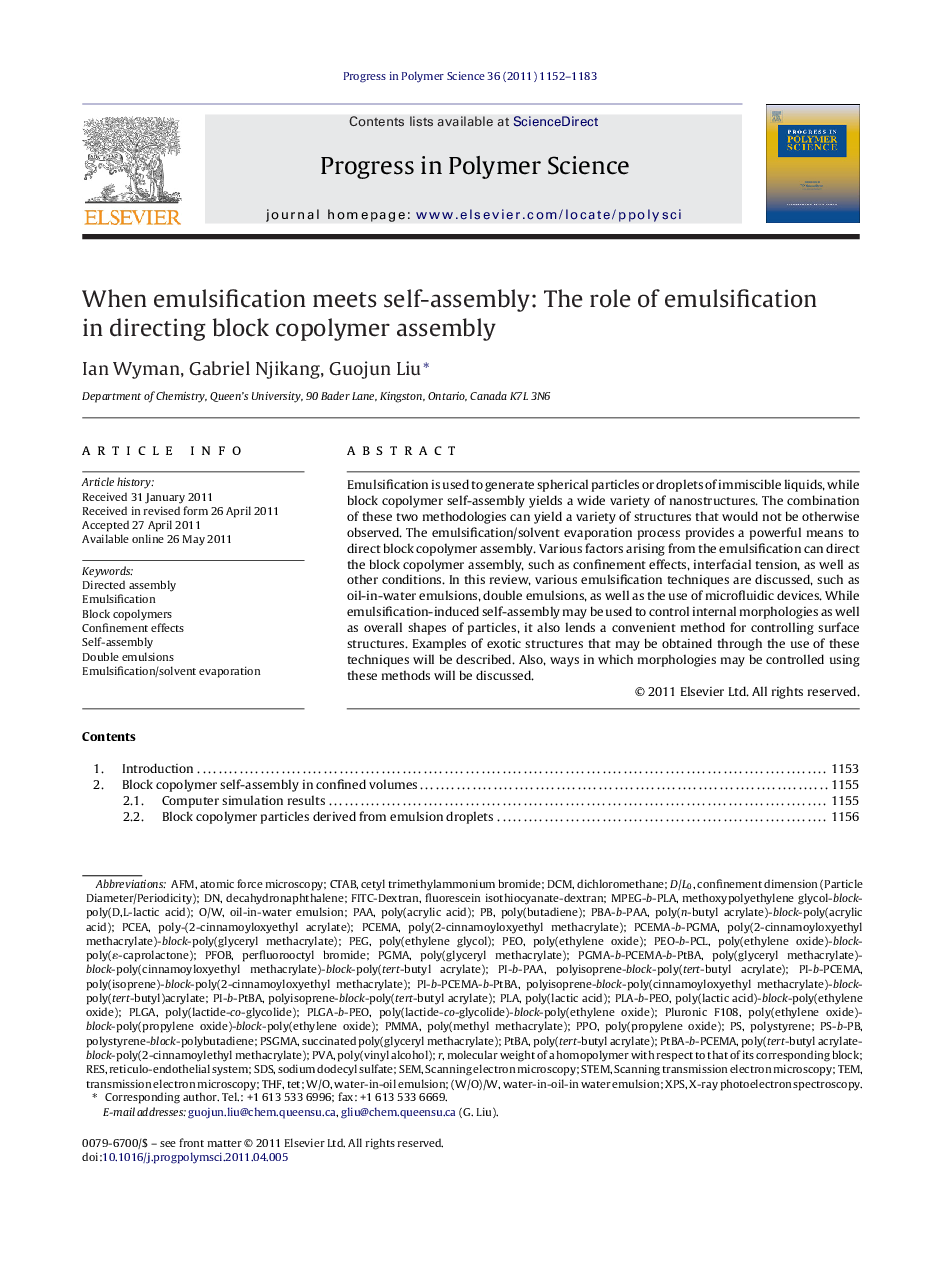| Article ID | Journal | Published Year | Pages | File Type |
|---|---|---|---|---|
| 5208703 | Progress in Polymer Science | 2011 | 32 Pages |
Abstract
Emulsification is used to generate spherical particles or droplets of immiscible liquids, while block copolymer self-assembly yields a wide variety of nanostructures. The combination of these two methodologies can yield a variety of structures that would not be otherwise observed. The emulsification/solvent evaporation process provides a powerful means to direct block copolymer assembly. Various factors arising from the emulsification can direct the block copolymer assembly, such as confinement effects, interfacial tension, as well as other conditions. In this review, various emulsification techniques are discussed, such as oil-in-water emulsions, double emulsions, as well as the use of microfluidic devices. While emulsification-induced self-assembly may be used to control internal morphologies as well as overall shapes of particles, it also lends a convenient method for controlling surface structures. Examples of exotic structures that may be obtained through the use of these techniques will be described. Also, ways in which morphologies may be controlled using these methods will be discussed.
Keywords
PAAptBAPGMAPluronic F108PCEAFITC-dextranPEO-b-PCLRESTETPPOPFOBPLAAFMDCMTHFPVAPLGASDSCTABO/WW/OConfinement effectscetyl trimethylammonium bromideEmulsificationWater-in-oil emulsionOil-in-water emulsionTemSelf-assemblyDouble emulsionsDecahydronaphthaleneDichloromethaneStemsodium dodecyl sulfatereticulo-endothelial SystemX-ray photoelectron spectroscopyXPSFluorescein isothiocyanate-dextranDirected assemblySEMScanning electron microscopyTransmission electron microscopySTEM, scanning transmission electron microscopyatomic force microscopyPerfluorooctyl bromidePoly(propylene oxide)Poly(butadiene)Poly(tert-butyl acrylate)poly(lactide-co-glycolide)Poly(lactic acid)PMMAPoly(methyl methacrylate)poly(ethylene oxide)Poly(ethylene glycol)poly(acrylic acid)Poly(vinyl alcohol)PEGPolystyrenePEOBlock copolymers
Related Topics
Physical Sciences and Engineering
Chemistry
Organic Chemistry
Authors
Ian Wyman, Gabriel Njikang, Guojun Liu,
